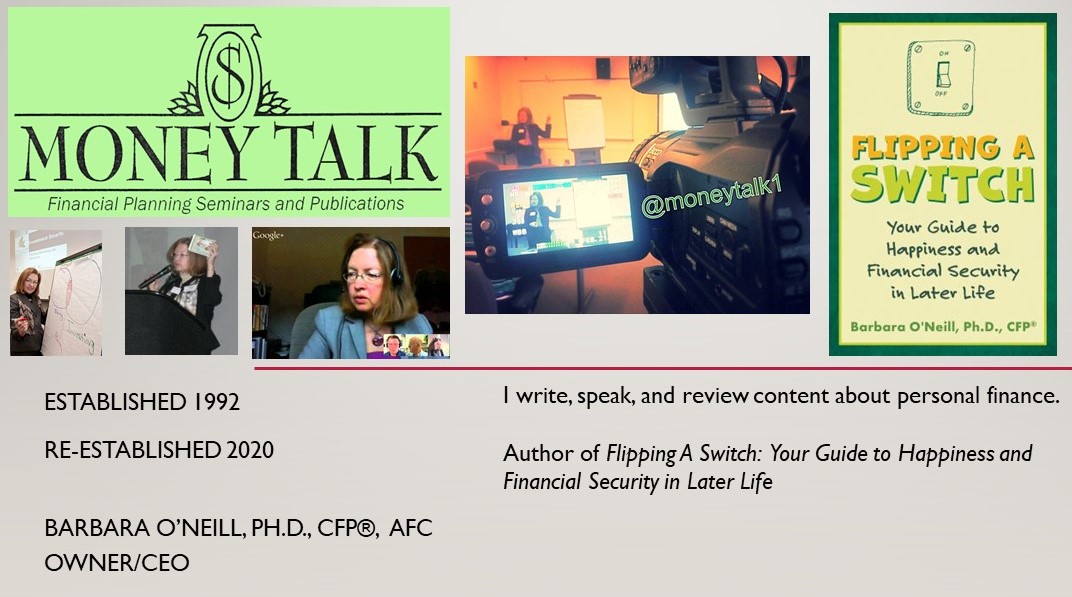One dictionary definition of the word “misperception” is a wrong or incorrect understanding of something. Often, misperceptions result in faulty decision-making or inaction to address a pressing situation. A financial example where misperceptions are common is estate planning.
Below are eight common estate planning misperceptions:
Estate Planning is for
“The Rich”- No matter how modest their net worth,
most adults own some property (e.g., a car, a bank account, and perhaps a
house). Without estate planning documents (e.g., a will or trust), property
will be distributed according the state intestacy laws.
My Will States Who Gets
my IRA- Two of the largest assets for many people, life
insurance and qualified retirement plans (e.g., 401(k) and 403(b) plans and
IRAs) are transferred via beneficiary designation- not via a will. It is wise
to name both primary and secondary beneficiaries.
PoD and ToD Are the Same-
A Payable-on-Death (PoD) designation is usually used for bank products such as
checking and savings accounts and certificates of deposit (CDs). A
Transfer-on-Death (ToD) designation is typically used for brokerage accounts.
In addition, 28 states allow real estate to be transferred with a ToD
designation and 19 states allow its use for vehicles.
My Spouse Can Make My
Decisions- Some people think that their spouse can make
financial and medical decisions for them without ancillary documents. This is
incorrect. For example, a spouse cannot sell someone’s interest in a property
without a durable power of attorney or make end-of-life medical decisions
without a living will and named health care surrogate.
Having a Will Avoids
Probate- Wills govern any property held in an individual’s
name (that does not have a named beneficiary) and provide for the administration
of that property through the probate process. This includes paying a deceased
person’s debts and transferring assets to heirs. Probate can be costly and
includes court filing fees and attorney and/or executor fees.
A Will or Trust Trumps a
Beneficiary Designation- Not true. If there is a conflict
between the terms of a beneficiary designation and a will (i.e., between the
person(s) named to receive a deceased person’s assets), the beneficiary
designation takes precedence.
A Durable Power of
Attorney Automatically Becomes Executor- Not necessarily. This
would only happen if the same person were named in two separate documents: a
durable power of attorney advance directive and a will. A durable power of
attorney agent is only authorized to act while a person is incapacitated and
the agent’s power ceases when the document creator dies.
Out-of-State Wills Are Not Valid if You
Move-
Wills from another state may or may not be valid but, even if they are, may not
work well with the new state’s laws and procedures. It is best to have a prior
state will reviewed by an attorney in the new state of residence.
This post provides
general personal finance or consumer decision-making information and does not
address all the variables that apply to an individual’s unique situation. It does
not endorse specific products or services and should not be construed as legal
or financial advice. If professional assistance is required, the services of a
competent professional should be sought.








